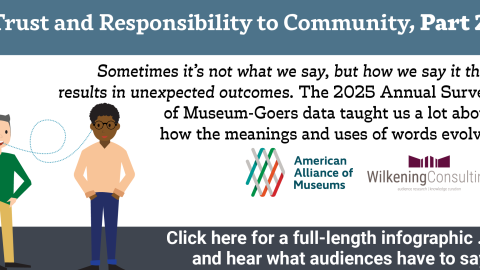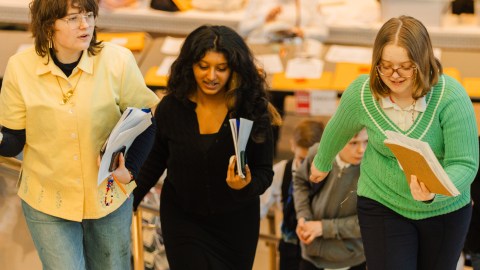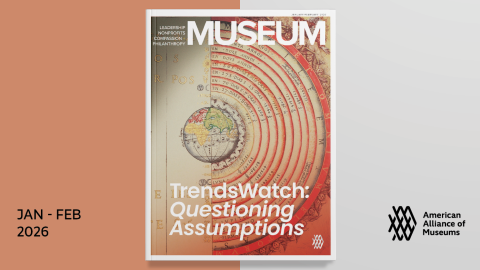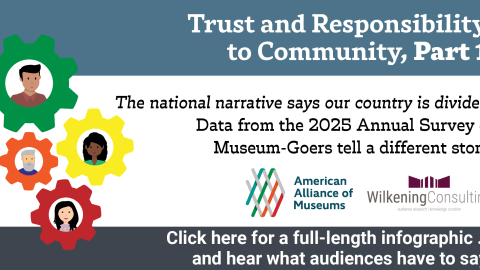Recently I blogged about Art.sy, a service built on “The Art Genome Project” that enables users to discover, learn about, and collect art that is suggested to them via a mathematical algorithm. That post provoked so much interesting discussion that I followed up with Christine Kuan, Chief Curator and Director of Strategic Partnerships at Art.sy, to relay some of the questions raised by commentators related to Art.sy’s educational goals, its for-profit business model, and its relationship to the art world. This is the first of two posts sharing her replies.
What’s your background—how did you end up working for Art.sy on this project?
I majored in art history and English literature and then taught for a year at Beijing University. My first job, after getting my MFA in Poetry at the Iowa Writers’ Workshop, was administering The Andrew W. Foundation Mellon Chinese Museum Directors Program at The Metropolitan Museum of Art. Philippe de Montebello was Director then. I was deeply influenced by his philosophy of curatorial excellence and public mission. After that I was the editor of Grove Art Online at Oxford University Press, and then Chief Curatorial Officer & Vice President for External Affairs at ARTstor. In all of these roles, it was about building encyclopedic coverage of world art and cultivating relationships with people and institutions so that could happen.
John Elderfield, Art.sy’s Senior Advisor and Chief Curator Emeritus of MOMA, approached me earlier this year about Art.sy’s educational and scholarly ambitions. I became extremely interested in both the challenges of the project and the potential positive impact Art.sy could have on the art world and on public engagement with art. The truth is, art isn’t as accessible to general audiences as people might think, particularly for low income and minority demographics and for people who don’t live in major cities. Art.sy, with its engineering, interaction design, and The Art Genome Project, is rethinking the way we provide online access to art.
For example, we have a gene for “Nude” which allows you to easily go from the Venus of Willendorf, 24000 to 22000 BCE to Peter Paul Rubens: Psyche, c.1612-15 to contemporary photographs of Kate Moss by Mario Sorrenti. This is significant not only for art historians, but for a number of areas of study—Feminist Theory, Popular Culture, Renaissance Studies, etc. Millions of images are already available at high-quality on the Web, but providing pathways and connections across 25,000+ artworks from all time periods and cultures in a way that everyone can utilize, not just experts in-the-know, is what’s really special about Art.sy.
Your title at Art.sy includes “Chief Curator”—how is what you do similar to what a museum curator does, and how is it different?
It’s similar in the sense that I’m responsible for the overarching strategy for assembling the collections for Art.sy and working with museums, foundations, artists’ estates, and individuals to cultivate those partnerships and relationships that will make our collections encyclopedic and compelling. We’re also going to be working on a number of online exhibitions in collaboration with various organizations, including Electronic Arts Intermix (EAI), which is one of the largest archives of video art. While curators at museums are curating collections of physical objects and dealing with those issues around education, conservation, exhibitions, and public relations, I’m overseeing those same issues around digital assets—education, digital preservation, intellectual property, virtual exhibitions, and communicating our mission to our partners, potential partners, and the public. I’m always thinking about how we can represent a broader range of artists, geographical regions, different cultures and time periods and how we create a meaningful experience and service both for our users and for our partners.
Art.sy has both a profit motive and an educational mission. You’ve worked at both nonprofit and for-profit ventures—do you feel that being a for-profit affects the educational dynamic, and if so, how?
Generating revenue is pretty much essential to every museum, nonprofit, and for-profit company these days. Even traditionally government-supported European museums have found their funding drastically cut in recent years and are searching for new ways to generate revenue. Whether it’s Target-sponsored free Friday nights at the museum or the Internet, we know that providing free access is the best way to pull in the largest number of visitors and to make the greatest impact.
Art.sy is building a robust, networked platform that is trying to anticipate where discovery, learning, and the art world will be 5-10 years from now. Today, 80% of art history students study contemporary art, and that the bulk of that art is being shown in galleries. Being for-profit, in the sense of taking a sales commission from artworks that sell through our website, is a sustainability plan that makes sense in the online realm and it enables us to be free to the public. I think the boundaries we draw in the analog realm really dissolve online—if you do a web search for any artist right now, you get works from commercial and non-commercial sources, and maybe also t-shirts, coffee cups, ads, birthday parties, and vacation photos. The difference is that Art.sy is a curated platform that provides free, public access to art from more than 300+ galleries and more than 70+ nonprofit partners, including SFMOMA, The British Museum, Smithsonian Cooper-Hewitt: National Design Museum, Fondation Beyeler, Corcoran Gallery of Art, Diebenkorn Foundation, Canadian Museum of Inuit Art, Asian Art Museum, Dallas Art Museum, Calder Foundation, Walters Art Museum, The Royal Collection, Indianapolis Museum of Art, The Estate of David Smith, and others.








